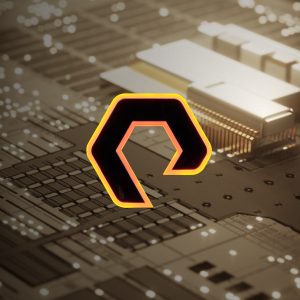AIOps is the leveraging of AI and machine learning to enhance and automate IT operations. The acronym AIOps encapsulates the fusion of artificial intelligence and IT operations, reflecting its aim to intelligently manage and optimise IT systems.
AIOps goes beyond traditional IT management tools by using advanced algorithms to analyse and interpret vast amounts of data generated by IT infrastructure. This data-driven approach enables AIOps to identify patterns, anomalies, and trends that might go unnoticed by human operators. In doing so, AIOps empowers organisations to proactively address issues, predict potential failures, and optimise performance.
The heart of AIOps’ value is the ability to make sense of the overwhelming volume of data generated by various IT components. Machine learning algorithms play a pivotal role in this process, as they continuously learn from historical data, adapting and evolving to better understand the intricacies of an organisation's IT environment.
Data analytics is another critical aspect of AIOps, providing the capability to extract valuable insights from diverse data sources. This includes logs, metrics, and event data, which AIOps platforms analyse in real time to detect patterns indicative of potential issues. By automating the correlation of these data points, AIOps not only identifies problems but also helps in predicting and preventing future disruptions.
DevOps vs. AIOps
The synergy between DevOps and AIOps has become increasingly important for organisations needing to enhance efficiency and streamline operations. DevOps, or development and operations, is a set of practices that aims to automate and improve the collaboration between software development and IT operations.
The relationship between DevOps and AIOps is symbiotic. While DevOps focuses on the collaboration and communication between development and IT teams, AIOps brings a layer of intelligence to the operational side. This collaboration ensures a more agile and responsive IT environment by seamlessly aligning development and operations.
What Is Deterministic AIOps?
Deterministic AIOps is a paradigm within AIOps that emphasizes predictability and reliability in its operations. In contrast to traditional AIOps approaches that may rely heavily on probabilistic models, deterministic AIOps aims to provide more certainty in decision-making processes. By incorporating deterministic algorithms and logic, this approach seeks to reduce uncertainties and make IT operations more transparent and controllable.
In deterministic AIOps, models are built on explicit rules and logic, enabling organisations to have a clearer understanding of the decision-making process. This level of transparency is crucial for IT operations requiring precision and reliability. Deterministic AIOps becomes especially beneficial in scenarios where the consequence of errors or inaccuracies can have significant impacts on business operations.
What Is Domain-agnostic AIOps?
Domain-agnostic AIOps takes a broader approach by transcending specific domains or industries. Unlike domain-specific AIOps solutions tailored to the unique characteristics of a particular sector, domain-agnostic models are designed to be versatile and adaptable across various industries.
The flexibility of domain-agnostic AIOps lies in its ability to handle diverse data sets and operational scenarios without requiring extensive customization for each domain. This makes it a valuable asset for organisations operating in multifaceted environments, allowing them to deploy AIOps solutions without the constraints of domain-specific limitations.
Why Modern AIOps Is Deterministic and Domain-agnostic
Modern AIOps solutions are increasingly adopting a dual approach, combining the deterministic principles of reliability with the versatility of domain-agnosticism. This combination addresses the evolving needs of organisations dealing with complex IT landscapes and diverse operational domains.
The deterministic aspect ensures precision and reliability in decision-making, reducing the risk of errors and providing a more transparent and understandable AIOps process. Simultaneously, domain-agnosticism allows organisations to deploy AIOps solutions seamlessly across various industries, promoting scalability and adaptability.






